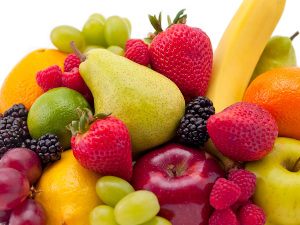Why does the world's third-largest fruit-producing country export only 2% of its production?

Brazil is one of the largest fruit-producing countries globally, with production spanning from north to south. However, unlike many fruit-growing nations, most of what is grown in Brazil’s fertile lands is directed toward the local market.
Jorge Souza, technical and project director of the Brazilian Association of Fruit Producers and Exporters (ABRAFRUTAS), explained during his presentation at Fruittrade 2024 in Santiago, Chile, that Brazil’s population of over 216 million is highly demanding, which keeps most production within the country.
Souza noted that while Brazil’s wide variety of fruits has maintained relatively stable production over the years, climate change could lead to declines in the near future.
“Climate change has become a major concern for the sector because we are having rains and droughts in times when they should not occur,” he said.
Production Versus Exports
One notable characteristic of Brazil is that, despite being the world’s third-largest producer in volume—behind China and India—it exports only 1.5%-2% of its total production.
Souza attributed this to several factors, primarily that “the domestic market is very demanding of fruit, which puts producers in a comfort zone because for them it is much simpler to do business in the local trade than to export.”
Of the volume that is exported, which reached 1.2 million tons last year, 75% goes to the European market, with countries Souza describes as “very demanding in terms of quality, flavor, certifications, and sustainable production of the fruit.”
ABRAFRUTAS’ Drive for Exports
Founded in 2014, ABRAFRUTAS aimed to organize the sector and promote exports. By 2023, Brazilian fruit exports had reached USD 1.3 billion.
Despite this progress, Souza noted there is still significant potential for Brazil to increase the value of its fruit exports.
“We have the advantage of being able to produce almost all types of fruit throughout the year thanks to our climatic conditions, so we have to take advantage of windows in the market where other origins are not in season,” he said.
He cited last year’s supply disruptions, such as Peru’s due to El Niño and California’s due to Hurricane Hilary, as opportunities that led to increased Brazilian grape exports.
However, Souza pointed out that Brazil’s share in the global fruit export business remains under 1% of total earnings.
“We are just starting to develop our fruit export industry in Brazil,” he said.
Magnitude of Brazil’s Fruit Industry
Brazil’s fruit production spans 2.5 million hectares and generates five million direct and indirect jobs, mainly in socioeconomically disadvantaged regions, benefiting local communities.
Souza described this dynamic as “a very virtuous circle, which gives us a very positive agenda to work on the issue of fruit growing because it is recognized as an agribusiness sector that promotes regional development.”
He also noted that fruit consumption in Brazil is closely tied to the population’s socioeconomic conditions: “For example, when the economic situation is good, consumption increases and when it is not, there is a decrease in consumption.”
Logistical Challenges
Brazilian exporters face significant logistical challenges due to the country’s size, which greatly extends transportation times.
“We look at the Asian market, for example, and we know that it is the one that will grow the most in the coming years, however, it is very difficult for us to compete,” Souza said. “If we send fruit by ship, it can take at least 40-45 days because of the different routes, which makes it very difficult to maintain the quality of the fruit.”
He added that Brazilian ports lack adequate infrastructure for fruit exports, as they are mainly designed for soybean and grain shipments.
“Demand is growing for the tropical fruits we produce, but we still have to make a great effort to compete in international markets,” Souza said.














































